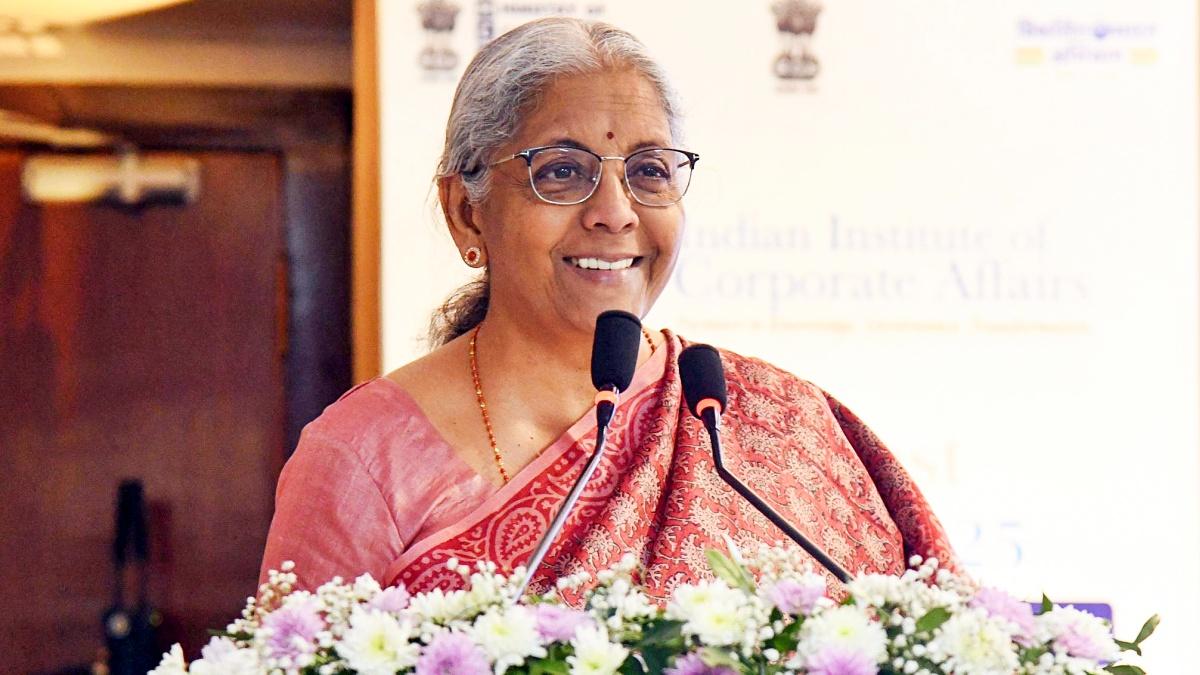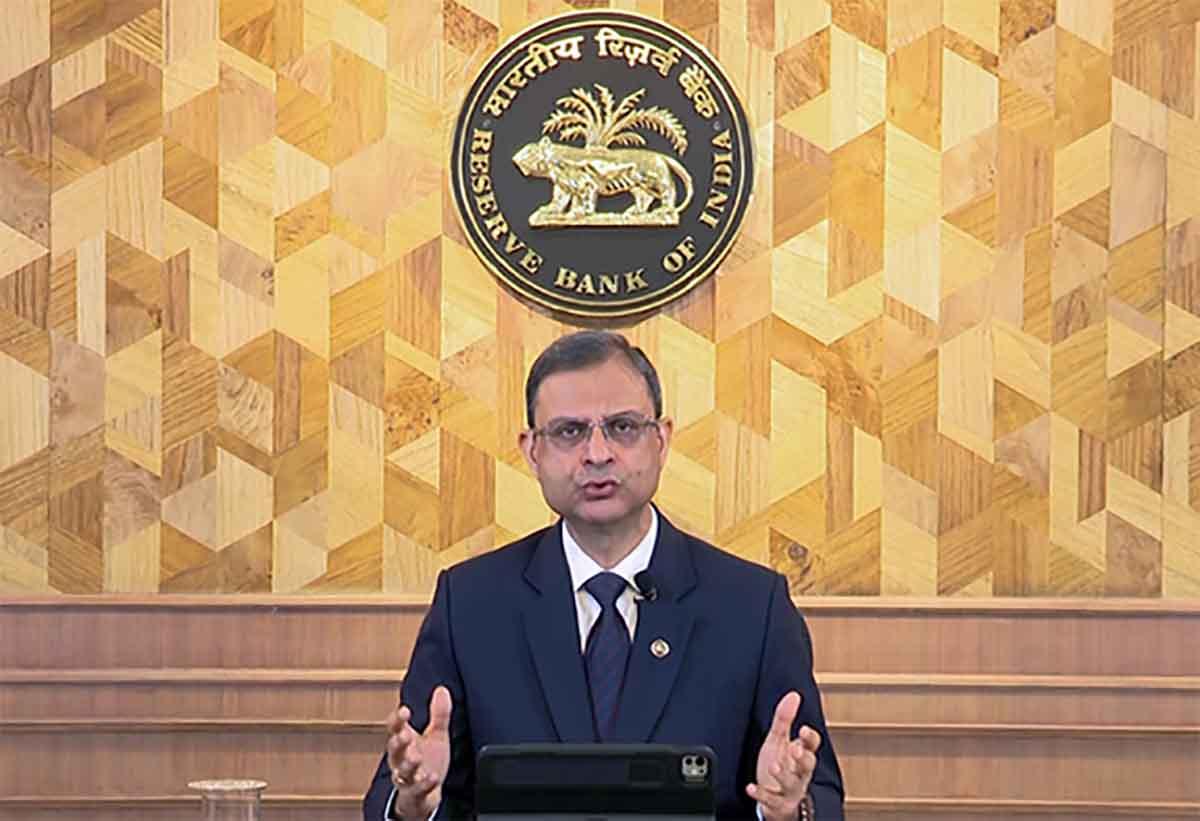State Bank of India (SBI), the largest lender in the country, has launched a share sale to institutional investors to raise upto Rs 25,000 crore, the biggest qualified institutional placement (QIP) so far by an Indian firm, and has set a floor price of Rs 811.05, which is at a 2.5 per cent discount on Wednesday’s closing price.

Photograph: Anindito Mukherjee/Reuters
Separately, the bank’s board approved another Rs 20,000 crore fund raise by issuing bonds.
Life Insurance Corporation, Singapore’s GIC, Capital International, and ICICI Prudential AMC are some of the investors in the share sale, investment-banking sources said.
This is the first QIP by the banking major since 2017, when it had raked in Rs 15,000 crore.
The fund raise, aimed at supporting growth, will add over 60 basis points to its capital adequacy ratio, which was 14.25 per cent as on March 31, 2025, analysts said. The government holds 57.43 per cent in SBI, and that is likely to come down to about 55 per cent after the share sale.
“The issue price will be determined in consultation with book running lead managers,” it said, adding it might offer a discount of not more than 5 per cent on the floor price calculated for the issue.
Citigroup Global Capital Markets, Morgan Stanley India, HSBC Securities, ICICI Securities, Kotak Investment Banking, and SBI Caps are the issue’s lead managers.
SBI’s market capitalisation has gone up from Rs 3.25 trillion at the end of March 2021 to Rs 7.13 trillion at the end of March 2025, according to its “Analysts Presentation” for 2024-25.
Market capitalisation based on Wednesday’s closing price was Rs 7.42 trillion.
The bank’s board, which met on Wednesday, approved issuing Basel III-compliant Additional Tier-I and Tier-II bonds, up to Rs 20,000 crore to domestic investors during FY26.
The fund raise is subject to the Government of India’s approval, SBI informed the stock exchanges.
SBI’s capital adequacy ratio stood at 14.25 per cent with Common Equity Tier-I of 10.81 per cent, Additional Tier-I of 1.3 per cent, and Tier-II of 2.14 per cent and as of March 2025, according to the Annual Report for FY25.
Its advances grew 12.03 per cent year-on-year (Y-o-Y) in FY25 to Rs 42.21 trillion and deposit books 9.48 per cent Y-o-Y to Rs 53.82 trillion in FY25.
According to the Reserve Bank of India’s data, SBI’s market share in aggregate domestic deposits was 22.60 per cent and that in aggregate domestic advances was 19.72 per cent at end of March 31, 2025.
Its risk-weighted assets rose to Rs 36.49 trillion at the end of March 2025 from Rs 32.22 trillion a year earlier.
QIP fundraising revives in June after a tepid first five months of 2025
Fundraising through qualified institutional placements (QIPs) saw a revival in June after a tepid first five months of 2025, and is set for a robust second half, as a market rebound has brought back favourable valuations and liquidity support for big-ticket issuances by corporate.
In the first five months of 2025, 13 firms raised Rs 15,408 crore through QIPs, compared to 30 firms that raised Rs 29,518 crore in the same period in 2024.
But in June 2025 alone, seven companies raised Rs 14,085 crore.
In June 2024, seven companies had cumulatively raised Rs 3,009 crore through QIPs.
So far in 2025, 22 firms have raised Rs 30,535 crore.
The biggest QIP so far this year was by Biocon, worth Rs 4,500 crore, followed by CG Power and Industrial Solutions, which raised 3,000 crore, and Hitachi Energy India (Rs 2,521 crore).
Indian Renewable Energy Development Agency raised Rs 2,006 crore.
Uco Bank and Capri Global Capital, which raised Rs 2,000 crore each, were the other large issuances.
“QIPs are gaining traction as corporates look to pursue capital expenditure (capex) for growth, especially in financials, industrials, and infrastructure.
“We believe that QIPs will continue to be the most efficient way to raise fresh capital for listed companies.
“The Securities and Exchange Board of India’s pricing formula, along with the relative flexibility it offers — especially the ability to issue various types of instruments — makes the QIP route one of the most attractive ways of raising fresh capital,” said Ranvir Davda, co-head of investment banking at HSBC India.
Davda added that these capital raises are being undertaken for capex, mergers and acquisitions, and to strengthen balance sheets as the Indian macroeconomic environment improves.
Bankers attributed the slowdown in QIP issuances in January and February to the broader selloff in the equity market, and in April and May to the updating of the January–March quarter numbers.
“Paperwork takes time, so does gauging demand.
“Investors will wait and see the March numbers before committing to any price for the QIP, which would have come out by April and May,” said Pranjal Srivastava, partner–investment banking at Centrum Capital.
QIP is a fundraising mechanism where a company issues new shares to a select group of investors at a discount to the prevailing market rate.
It is the preferred mode for raising follow-up capital as it is time-efficient and inexpensive.
The QIP pipeline for the remainder of the year looks robust.
So far in 2025, around 151 firms have received board approvals to come out with QIPs.
Companies from more than a dozen sectors are looking to raise funds, though banks and financial services firms dominate the list.
State Bank of India launched its Rs 25,000 crore QIP on Wednesday — the largest issuance ever.
“Companies want to keep the approvals ready to ensure that no time is wasted when there is demand,” said Srivastava.
Sundar Sethuraman, Samie Modak




